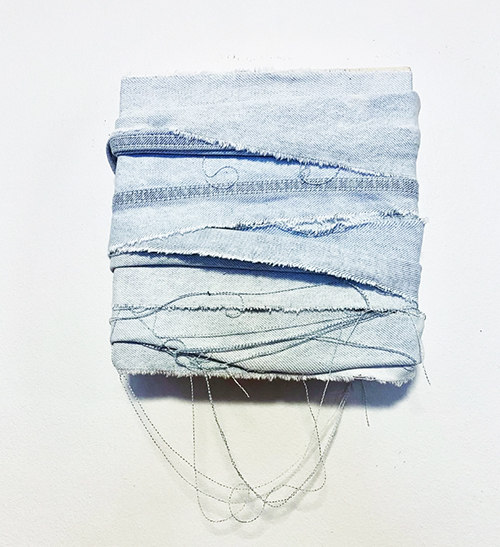The Choices We Make

This artwork ' The Choices We Make' is made from denim sourced from recycled jeans and alludes to the ritual compulsive buying encouraged within the fast fashion industry
The United Nations has advised that it takes 3,781 litres of water to make one pair of jeans. The process equates to around 33.4 kilogrammes of carbon equivalent emitted, like driving 111 kilometres.
Even just washing our clothes releases plastic microfibres and other pollutants into the environment, contaminating our oceans and drinking water. Around 20 per cent of global industrial water pollution is from dyeing and textile treatment.
The fashion industry wields considerable power globally. It is worth US$1.3 trillion, employing around 300 million people along the value chain.
Australian Environment Minister Tanya Plibersek has warned the fashion industry must turn its back on fast fashion, as she considers whether to regulate the sector, including a possible levy on the sector.
Nearly all discarded clothing ends up in landfill, and clothing collection and repurposing of clothing is mainly run by charities, who are overwhelmed by donations.
And the pace of that is speeding up, with Australians on average now purchasing 56 items of clothing each year, and more than 200,000 tonnes of clothing being sent to Australian landfills annually, according to the Australian Fashion Council.
The clothing industry is also the fourth-most polluting industry in the world, generating somewhere between 4 to 8 per cent of global emissions.
The minister is currently considering whether to intervene in the sector to improve its recycling and reuse efforts, which could include minimum design standards or mandating fashion brands contribute to a green fund for every piece of clothing they make or import and put to market.
UN Environment’s Llorenç Milà i Canals, Head of the Life Cycle Initiative, said fashion presents a massive opportunity to create a cleaner future.
But steps must be taken to involve everyone involved in the value chain to address environmental hotspots; define and take bold action on them.
“All actors must play their part in redefining the way value is generated and kept within the apparel sector, moving away from disposable apparel to a sector that generates and sustains value for society without polluting the environment,” he said.
 Find Karen on Facebook
Find Karen on Facebook